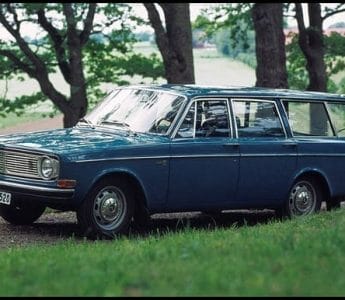Displaying symbols of wealth is considered bad form in academia – so the pricey 1968 Volvo 145 station wagon was an instant hit amongst university professors because it was so boxy it didn’t look like a luxury car.


So when Volvo announced last week that it will discontinue the production of internal combustion engines in 2019 – moving entirely to modest electric engines, it caught our attention.
Here’s more from Automotive News:
“This announcement marks the end of the solely combustion engine-powered car,” Volvo CEO Hakan Samuelsson said in a statement. “Volvo Cars has stated that it plans to have sold a total of 1 million electrified cars by 2025. When we said it we meant it. This is how we are going to do it.”
Read that again. Petrol engines out, electric engines in. For all powertrains from 2019 onwards.
It’s as though LeBron James announced that he was switching from basketball to ballet.
Obviously we’re curious what a 6’8” 250 lb black man looks like in an a Tutu.
But still: why James? Why?
The lithium ion battery electric vehicle has morphed from a trend – to a mega-trend – to disruptive technology.
The average cost of electric vehicles is falling and expected to pull level with conventional cars in 2018.
In 2016, lithium ion battery revenues were $3 billion. By 2040 the market will be worth more than a $100 billion.
Volvo’s announcement is an inflection point in the evolution of modern transport.
In concrete terms, what does this mean?
If you own oil stocks – you should sell them immediately – and buy lithium.
The Global X Lithium ETF (LIT.NYSE) is an investment vehicle that tracks the performance of the Solactive Global Lithium Index. It’s up about 20% year to date. That’s nothing to sneeze at – but there are small nimble lithium companies coiled and ready to roar.
When the lithium market catches fire, these little guys can gain 20% in a day.
One such company is Quantum Minerals (QMC.V) that controls a high-quality Lithium prospect in the Flin Flon VMS district in Manitoba, Canada.
The project covers about 700 hectares, 150 Km northeast of Winnipeg.
Have you ever been to Winnipeg?
For drama, noise and violence – we strongly recommend the hailstones.
QMC’s Cat Lake Lithium property contains the historical Irgon Mine. The company is conducting work programs with the objective of achieving near-term production.
Right now, QMC is assembling historical drill data for the purpose of rendering a 3-dimensional model of the historical resource.
QMC’s property includes the spodumene-bearing Irgon Dike.
Spodumene is an important source of lithium. It can be extracted easily from spodumene by fusing in acid. Global production of lithium via spodumene is about 80,000 metric tonnes a year.
There are cheaper ways to get lithium, but not quicker ways, and they tend to be lower quality.
The property has a total exposed strike length of 442 meters with an average width of 7 meters. Historic metallurgical tests reported an 87% recovery from which a concentrate averaging 5.9% Li2o was obtained.
We think the Quantum’s lithium asset may have an important role to play in this brave new universe of electric Volvo’s.
Pure Electric vehicle sales are expected to increase from 650,000 in 2017 to about 7,000,000 a year a decade later. Hybrids will grow from 2.2 million units this year to about 19,000,000 in the same time span.
Volvo is a private company with Chinese owners. China is the world’s biggest market for electric vehicles. In 2016, Volvo built 70,000 cars in China. It has the factory capacity to make 300,000 by 2019.
There is also a $51 billion company called Tesla (TSLA.NASDAQ) that are looking for locally sourced product.
Quantum’s last news came 4 months ago. During this time the stock has slid 33% to .09. Buying opportunity? Possibly. We believe in this project. But we are also waiting for news.
FULL DISCLOSURE: Quantum Minerals is an Equity Guru marketing client. Volvo is not. Neither is LeBron James.



